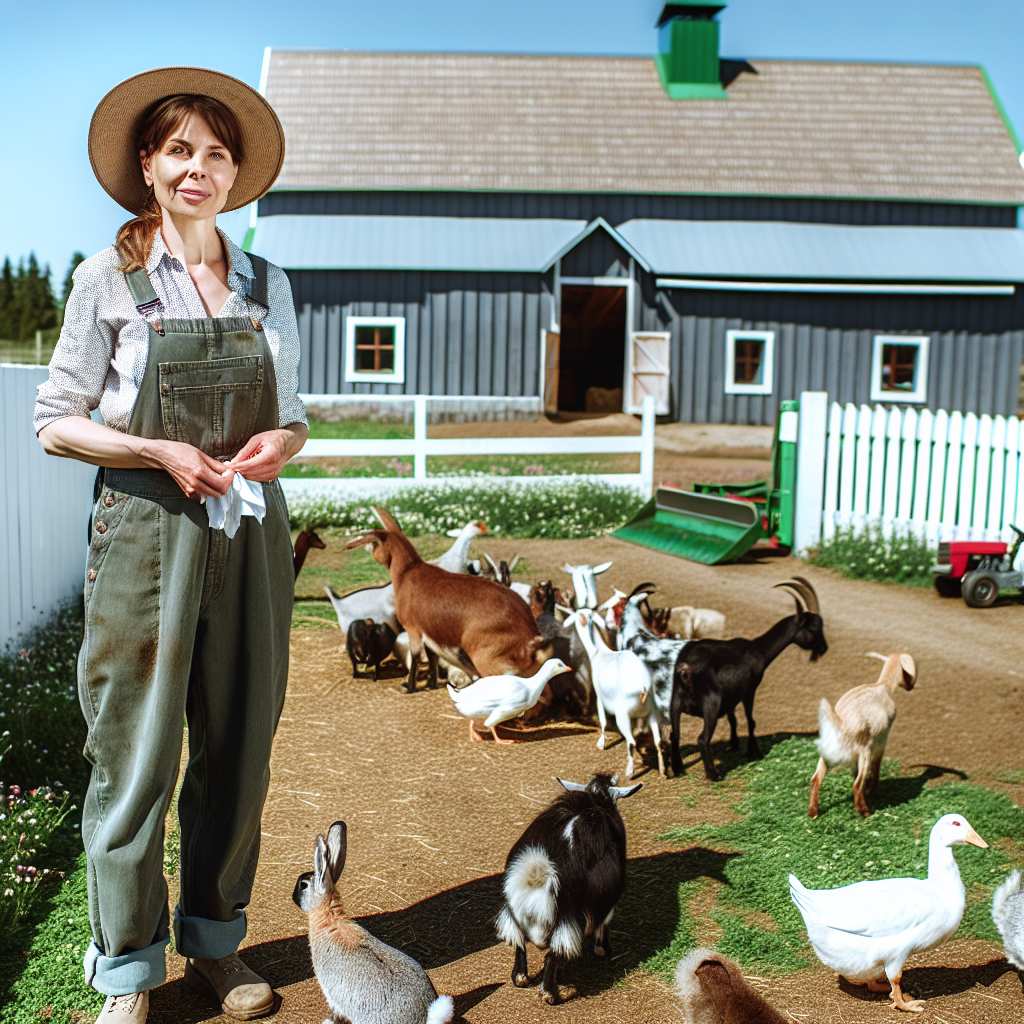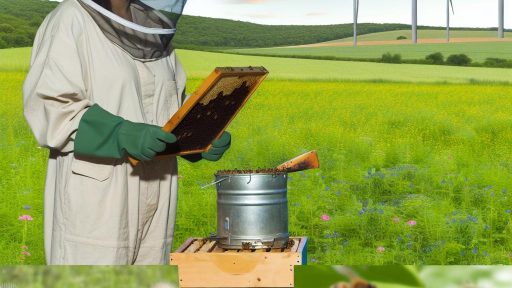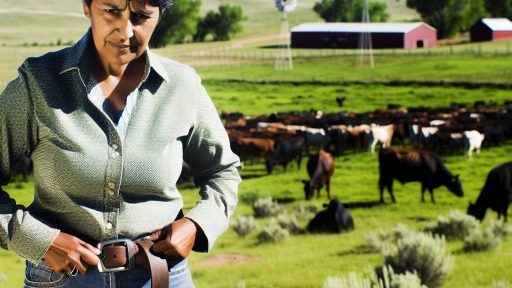Introduction to Small Livestock Management
Importance of Small Livestock Management
Small livestock management plays a crucial role in sustainable agriculture.
Farmers can achieve higher yields and improve their livelihoods.
This approach enhances biodiversity and soil health.
Moreover, it helps in efficient resource utilization.
Benefits of Small Livestock Management
Effective management of small livestock brings numerous benefits.
First, it provides a consistent source of income.
Livestock such as chickens, goats, and sheep require less space.
Consequently, farmers can utilize small parcels of land efficiently.
Additionally, these animals can contribute to pest control and soil fertility.
Economic Advantages
Small livestock enterprises reduce the financial risks of farming.
They allow farmers to diversify their income streams.
As a result, producers can weather fluctuating market conditions.
Furthermore, farmers can tap into niche markets for organic or specialty products.
Environmental Benefits
Small livestock management supports environmentally friendly practices.
These practices include rotational grazing and manure recycling.
Transform Your Agribusiness
Unlock your farm's potential with expert advice tailored to your needs. Get actionable steps that drive real results.
Get StartedThis approach enhances soil quality and promotes healthy ecosystems.
Moreover, smaller herds produce less waste per animal.
Social Impacts
Small livestock management also fosters community development.
It encourages cooperation and knowledge sharing among farmers.
Furthermore, it contributes to food security by increasing access to protein sources.
As a result, communities become more resilient overall.
Choosing the Right Small Livestock for Your Farm
Benefits of Small Livestock
Small livestock is an excellent choice for small-scale farming.
They require less space and resources compared to larger animals.
Additionally, they provide versatile options for income production.
Types of Small Livestock
When selecting livestock, consider goats, sheep, chickens, and rabbits.
Each type offers unique benefits and requires different management techniques.
Goats
Goats are known for their adaptability and hardiness.
They thrive in various climates and are excellent foragers.
Furthermore, goats provide milk, meat, and fiber.
They have relatively low feed requirements compared to other livestock.
Sheep
Sheep are an excellent choice for wool and meat production.
They graze efficiently, helping to manage pasture health.
Moreover, sheep can be raised on less fertile land.
Different breeds offer diverse traits for specific farming needs.
Chickens
Chickens provide a constant source of fresh eggs and meat.
They are relatively easy to care for and require minimal space.
Plus, chickens can help control pests in the garden.
Their waste also adds nutrients to the soil.
Rabbits
Rabbits produce meat quickly and efficiently.
Showcase Your Farming Business
Publish your professional farming services profile on our blog for a one-time fee of $200 and reach a dedicated audience of farmers and agribusiness owners.
Publish Your ProfileThey require minimal space and can be raised indoors or outdoors.
Additionally, their droppings are excellent fertilizer for crops.
Raising rabbits is a sustainable way to diversify your farm.
Factors to Consider
When choosing livestock, evaluate your farm’s resources and goals.
Consider factors like space, climate, and available feed.
Additionally, assess your market demand for livestock products.
Make sure to choose animals that align with your farming strategy.
Basic Nutritional Requirements for Small Livestock
Understanding Nutritional Needs
Small livestock have specific dietary needs to thrive.
These needs vary among species and depend on their life stage.
Understanding these requirements is crucial for optimal growth.
A balanced diet supports health and productivity.
Types of Feed
Small livestock benefit from a variety of feed types.
Common feed types include grains, forage, and supplements.
Grains provide energy and should form a staple in their diet.
Forage is essential for ruminants like goats and sheep.
Additionally, supplements can enhance nutritional value.
Grains
Grains are energy-dense and easily digestible.
Common choices include corn, barley, and oats.
It’s important to introduce grains gradually to avoid digestive issues.
Forage
Forage includes grasses, legumes, and hay.
It provides fiber and aids in proper digestion.
Small livestock should have constant access to quality forage.
Supplements
Supplements can provide additional vitamins and minerals.
Mineral blocks and high-protein pellets are excellent options.
Regularly evaluate livestock to adjust supplement needs.
Dietary Needs for Different Livestock
Different species of small livestock require unique diets.
Chickens thrive on a diet rich in protein and grains.
Goats require high-fiber forage and grains for energy.
Pigs benefit from a balanced mix of grains, protein, and fats.
Chickens
Chickens need a diet high in protein for egg production.
Layer feeds are best for hens, while broilers need high-energy feeds.
Goats
Goats also need forage supplemented with grains.
Ensure access to minerals specifically formulated for goats.
Pigs
Pigs require a versatile diet that includes grains and protein sources.
Consider using a complete feed designed for pigs of varying ages.
Feeding Strategies
Adopt feeding strategies that promote healthy growth.
Regular feeding times help regulate digestive processes.
Monitor feed intake and adjust based on livestock activity.
Consider environmental factors that may influence feeding habits.
Discover More: Essential Tools for Successful Mushroom Cultivation
Showcase Your Farming Business
Publish your professional farming services profile on our blog for a one-time fee of $200 and reach a dedicated audience of farmers and agribusiness owners.
Publish Your ProfileHousing and Shelter Considerations for Small Livestock
Space Requirements
Every type of small livestock has specific space needs.
Chickens, for example, require at least 2 to 3 square feet per bird inside a coop.
Pigs need around 20 square feet per pig in a rooting area.
Goats typically require a minimum of 15 square feet per animal in their shelter.
Providing sufficient space prevents overcrowding and stress.
This leads to healthier and more productive animals.
Ventilation Importance
Good ventilation is critical in livestock housing systems.
It helps reduce moisture and ammonia levels in the air.
Proper airflow ensures a comfortable environment.
Moreover, adequate ventilation helps prevent respiratory issues.
Ensure that windows and vents can be easily adjusted.
Seasonal changes may require modifications to improve airflow.
Safety Features
Safety is paramount when constructing livestock shelters.
Strong fencing around enclosures prevents predator access.
Secure roofs protect animals from weather elements.
Use non-toxic materials to avoid hazards.
Ensure that any electrical wiring is well protected.
Additionally, provide insulated areas for extreme weather conditions.
Sanitation Practices
Maintaining a clean environment is essential for livestock health.
Regular cleaning schedules should be established and followed.
Use bedding materials that are easy to manage and replace.
Consider composting waste to enhance soil health.
This practice creates a sustainable approach to waste management.
Location Considerations
Location plays a significant role in livestock housing design.
Choose a site with good drainage to avoid flooding.
Ensure the location has access to clean water sources.
Consider proximity to food supplies and transport routes.
Evaluate the landscape for natural windbreaks and shade.
This protects animals from harsh weather conditions.
Gain More Insights: Choosing the Best Substrate for Mushroom Growth
Health Management Practices
Preventive Care
Preventive care is essential for small livestock health management.
Regular check-ups help identify health issues early.
Proper nutrition supports immune system function.
Temperature control in living environments is critical.
Ensure clean and dry bedding to prevent diseases.
Minimize stressors such as overcrowding or poor ventilation.
Utilize biosecurity measures to limit disease transmission.
Vaccinations
Vaccinations protect livestock from common diseases.
Consult with a veterinarian on vaccination schedules.
Ensure vaccinations are up-to-date for optimal protection.
Showcase Your Farming Business
Publish your professional farming services profile on our blog for a one-time fee of $200 and reach a dedicated audience of farmers and agribusiness owners.
Publish Your ProfileCommon vaccines include those for clostridial diseases.
Additionally, consider vaccines for respiratory illnesses.
Document all vaccinations to track livestock health.
Common Diseases
Being aware of common diseases aids in prevention.
Newcastle disease significantly impacts poultry health.
Swine flu can also spread easily among pigs.
In contrast, parasites can affect all forms of livestock.
Monitor animals for symptoms of illness regularly.
Isolate sick animals to prevent the spread of disease.
Consult a veterinarian for advice on treatment options.
Explore Further: Lighting Solutions For Indoor Urban Gardens

Breeding and Reproduction: Strategies for Sustainable Growth and Profitability
Understanding Breeding Techniques
Effective breeding techniques enhance livestock productivity.
Consider selective breeding based on desirable traits.
This method increases the quality of the offspring.
Moreover, implementing artificial insemination can optimize genetics.
It allows for a broader genetic diversity among livestock.
Planning Breeding Cycles
Careful planning of breeding cycles is essential for success.
Track the reproductive status of each animal.
Create a breeding calendar that minimizes downtime.
This ensures continuous production and better cash flow.
Health Management Practices
Maintain strict health management protocols during breeding.
Regular vaccinations ensure the health of breeding stock.
Consult with veterinarians to address any reproductive issues.
Healthy livestock produces healthier offspring.
Nutrition’s Role in Reproductive Success
Proper nutrition is crucial for successful breeding.
Ensure livestock receive balanced diets throughout the year.
Supplementing with vitamins and minerals enhances fertility.
Additionally, monitor body condition scores regularly.
Monitoring and Evaluating Performance
Careful monitoring helps optimize breeding outcomes.
Evaluate the performance of each breeding pair regularly.
Adjust breeding strategies based on their reproductive success.
Furthermore, keep detailed records of each animal’s performance.
Incorporating Technology
Technology can streamline breeding management.
Use software to track breeding schedules and outcomes.
Consider genomic testing to enhance breeding decisions.
Technology saves time and improves overall efficiency.
Engaging with the Community
Connect with other farmers to share knowledge.
Attend workshops to learn about innovative practices.
Collaboration can lead to improved strategies and profitability.
Networking opens doors to valuable resources and insights.
Showcase Your Farming Business
Publish your professional farming services profile on our blog for a one-time fee of $200 and reach a dedicated audience of farmers and agribusiness owners.
Publish Your ProfileExplore Further: Organic Composting Methods for Rich Soil
Market Trends and Sales Strategies
Understanding Market Trends
In the current farming landscape, consumers increasingly seek locally sourced products.
Health-conscious consumers drive demand for organic and sustainably raised livestock.
Additionally, small livestock management is gaining traction among urban and suburban populations.
Understanding these trends enhances your sales and marketing strategies effectively.
Identifying Target Markets
Your first step is to identify potential target markets for your products.
Local farmers’ markets are excellent venues for direct sales to consumers.
Restaurants and eateries often seek fresh, local ingredients for their menus.
Furthermore, consider online platforms that cater to local produce delivery.
Developing Effective Sales Strategies
Implementing strategic pricing is crucial for maximizing profits.
Analyze your competition and offer competitive pricing for your livestock.
Promotion through social media can raise awareness about your offerings.
Selecting the right platforms ensures that your message reaches your audience effectively.
Utilizing Online Markets
Online marketplaces provide an opportunity to expand your reach beyond local customers.
Consider platforms like Etsy and local food co-ops to list your products.
Ensure you have high-quality images and engaging descriptions to attract buyers.
Email marketing remains a powerful tool for connecting with potential customers.
Engaging with the Community
Building a community around your farm fosters customer loyalty.
Offer workshops or farm tours to educate buyers about your practices.
Partnering with local organizations can amplify your reach and credibility.
By being active in the community, you cultivate trust and long-term relationships.
Evaluating Sales Performance
Regularly assess your sales strategies to ensure effectiveness.
Gather feedback from customers to refine your approach continually.
Utilizing analytics can help you track trends and identify growth opportunities.
Adjustments based on data will position your farm for sustained profitability.
Sustainable Practices in Small Livestock Farming
Implementing Organic Methods
Organic methods enhance the health of livestock and the quality of products.
These methods focus on natural feed and minimal chemical inputs.
Farmers should prioritize the use of organic grains and supplements.
Rotational grazing can help maintain pasture health and soil quality.
This approach also reduces overgrazing and promotes biodiversity.
Moreover, integrating cover crops can enhance nutrient cycling.
Utilizing natural pest control methods minimizes chemical residue.
Additionally, organic livestock systems support animal welfare.
Ethical Considerations in Raising Livestock
Ethical farming practices prioritize animal welfare and humane treatment.
Farmers should ensure that animals have adequate space and proper shelter.
Access to clean water and nutritious food is also essential.
Moreover, avoiding overcrowding significantly improves animal comfort.
Regular veterinary care helps prevent disease and supports overall health.
Farmers can also consider adopting alternative housing methods.
These methods promote natural behaviors and reduce stress in animals.
Showcase Your Farming Business
Publish your professional farming services profile on our blog for a one-time fee of $200 and reach a dedicated audience of farmers and agribusiness owners.
Publish Your ProfileTransparency with consumers builds trust and enhances marketability.
The Role of Community and Education
Education plays a crucial role in promoting sustainable farming practices.
Workshops and training sessions equip farmers with knowledge and skills.
Community support can foster a culture of sustainable agriculture.
Collaborative initiatives promote resource sharing and networking.
Access to local markets helps sustain small farms effectively.
Additionally, sharing success stories can motivate others to adopt similar practices.
Building a community around ethical farming strengthens the local economy.
Additional Resources
Programs and Support for Small and Mid-Sized Farmers | Home
Maximizing Production in Small-Scale Flower Farming: Tips for …




